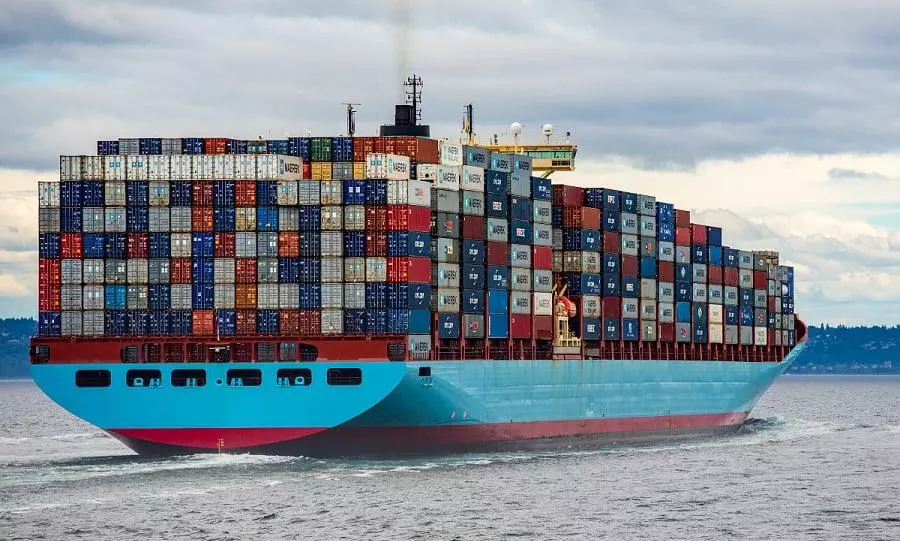Xeneta forecasts stormy 2024 as shipping lines to hike rates
"Businesses who locked into long-term contracts at lower end of 2023 prices could be first to suffer if market turns"

Supply chains around the world could be at serious risk amid expected increases in the cost of ocean freight shipping during 2024, according to Xeneta.
Xeneta has termed the current market as unsustainable. Patrik Berglund, CEO, Xeneta says: “The cost of moving goods by sea has plummeted during 2023 by almost 60 percent for long-term contracts on a global level, and some corridors such as the Transatlantic into U.S. East Coast and Far East to Europe, down by around 80 percent on both short and long-term rates. In fact, freight rates are so low that shipping liner companies are effectively subsidising businesses to transport their goods around the world.
“The big shipping liner companies won’t allow this to continue and will jack up prices – it could be in 2024 or it could be later – but it’s inevitable and the carriers will want it sooner rather than later.”
Xeneta is warning businesses who locked into long-term contracts with shipping liner companies at the lower end of 2023 prices that they could be first to suffer if the market turns. Berglund says: “The shipping liner companies will look at contracts agreed in 2023 and, in many cases, deem them non-profitable. They will take every opportunity they can to not transport those customer’s containers. Instead, they will choose to transport containers belonging to customers with healthier 2024 contract prices if the market rises. It feels unfair, and perhaps it is, but the shipping liner companies are within their rights to do it. This is the kind of opportunistic behaviour we saw from shipping liner companies during the pandemic to save their bottom line.”
2024 Ocean Freight Market At A Glance *Demand to grow by 2.5 percent. *Supply to grow by 6.5 percent. *Spot rates to remain volatile throughout the year. *Carriers will aim to increase spot rates through smart capacity management and General Rate Increases (GRI). *Steadier long-term rates than seen during 2023. *Spot will hover just below or above long-term rates throughout 2024. |
“Businesses face a real challenge keeping supply chains intact if their goods are stuck in a port halfway around the world. It is therefore vital for companies entering negotiations for new contracts to have access to the very latest market data to understand whether, or when, this risk exposure becomes a reality.”
If there is a saving grace for businesses in 2024 it may be through continued over-capacity, which has reached record levels in 2023, the update added. "If this overcapacity continues, carriers will have no incentive to choose between transporting the lower or higher priced containers and will pick up both."
Dark skies on the horizon
The ocean freight sector has undergone a tumultuous journey in recent years as it recovers from congestion caused by Covid-19 at ports across the shipping networks.
The current global economic downturn has also resulted in declining consumer spending and demand for goods, which generally spells bad news for the shipping industry, the update said. Containers transported between the Far East and the U.S. West Coast alone has fallen by 16.2 percent during 2023.
Berglund says: “I think about underlying weak macro-economics; inflation, interest rates, cost of living and reduced global consumption of goods. On top of that you have turmoil across the world, whether it is in Ukraine or the Middle East, so there are some heavy dark skies in the horizon for the shipping industry.”
Peter Sand, Chief Shipping Analyst, Xeneta adds: “No two trades are alike - so you must understand the data across all the lanes in which you operate.
“If you track only the top trades, you miss opportunities. For instance, while demand from China into North America and North Europe is down, Chinese products are finding new customers in the Middle East, ISC and South America - with volumes growing quickly on those routes."
Emissions regulations are a conundrum
To add to shipping industry woes, 2024 will see the introduction of the EU Emissions Trading Scheme (EU ETS) and more stringent application of the IMO’s Carbon Intensity Indicator (CII), both of which will require ocean liner companies to pay for their emissions, the update added.
Berglund adds: “The new environmental regulations will prohibit carriers from utilising their fleet effectively because their vessels aren’t environmentally-friendly enough. The fact the cost of ocean shipping is so low means there is no money in the market. At the same time we are asking these huge, loss-making shipping liner companies to spend vast sums of money purchasing new vessels in order to make their green transition. Customers want ocean transport to be green but they are not willing to pay the bill. It’s a bizarre situation and a conundrum for the industry.”
Disruption is the norm and there could be market forces around the corner no one could have predicted, says Berglund. "That’s why it’s so important to understand your supply chains and have real-time access to ocean freight shipping rate data and insight.”



